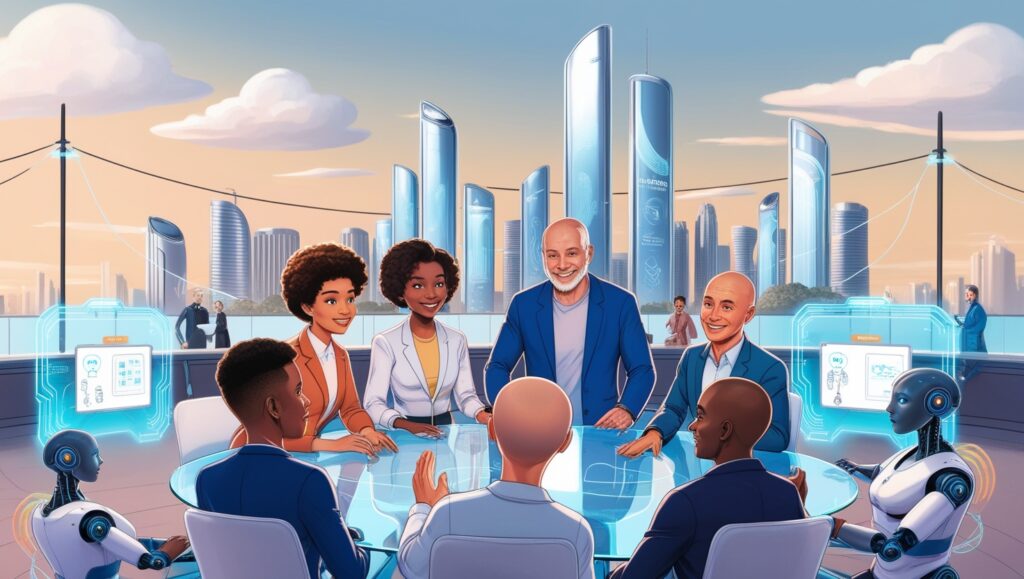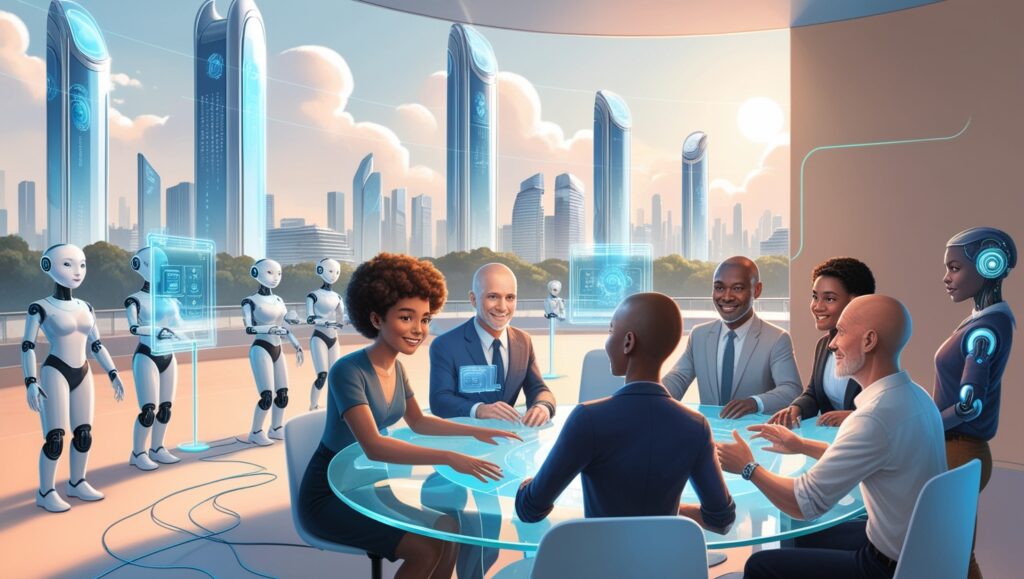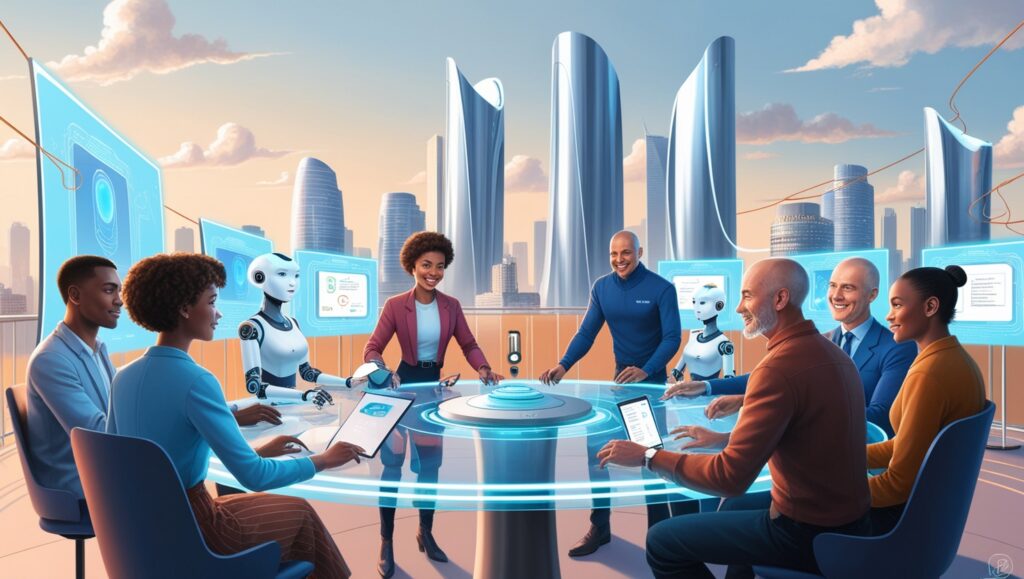The Future of Work in a Post-Pandemic World: Navigating Remote Work, Automation, and Job Market Shifts

The COVID-19 pandemic has forever changed the landscape of work. In just a few short months, businesses and employees were forced to adapt to a new way of working—one that emphasized flexibility, digital tools, and remote collaboration. While the pandemic may have acted as a catalyst for these changes, the effects on the global workforce are far from temporary. As we move into a post-pandemic world, the future of work will be shaped by three key factors: remote work, automation, and shifting job market dynamics.
As companies and workers adjust to this new era, it’s essential to understand the challenges and opportunities these changes bring, and how they will shape the workforce of tomorrow.
1. The Rise of Remote and Hybrid Work
The most obvious shift in the post-pandemic work environment is the dramatic rise in remote and hybrid work models. According to surveys, more than 40% of the global workforce is now working remotely, and many companies are embracing the flexibility that remote work offers. For employees, remote work has brought about greater flexibility in work-life balance, while for businesses, it has led to cost savings on office space and the ability to hire talent from a global pool.
a. The Benefits of Remote Work:
- Flexibility and Work-Life Balance: One of the greatest advantages of remote work is the ability to work from anywhere, which allows employees to better balance their personal and professional lives. This flexibility has become especially valuable for parents, caregivers, and those with long commutes.
- Increased Productivity: Studies have shown that many employees are more productive working remotely due to fewer distractions and the ability to create a personalized, comfortable work environment.
- Talent Pool Expansion: With no geographic limitations, businesses can hire talent from anywhere in the world, leading to a more diverse workforce and the ability to tap into skill sets that may have been previously inaccessible.
b. The Challenges of Remote Work:
- Collaboration and Communication: Remote work has created challenges for teams that rely on face-to-face interaction for brainstorming, decision-making, and team-building. Maintaining effective communication is essential for ensuring productivity and collaboration.
- Work-Life Blur: While remote work offers flexibility, it can also blur the boundaries between work and home life. Many workers find it difficult to “switch off” when working from home, leading to burnout and stress.
- Mental Health Impact: Prolonged remote work can lead to feelings of isolation and disconnection, particularly for employees who miss the social aspects of office life.
c. Hybrid Work as the New Normal:
Many companies are adopting hybrid work models, which combine remote work with in-office days. This model allows employees to enjoy the flexibility of remote work while also benefiting from in-person collaboration when needed. It’s expected that hybrid work will become the default for many organizations moving forward, offering a balance between flexibility and connection.
2. Automation and the Changing Job Market
Automation has been a growing trend for several years, but the pandemic accelerated its adoption. The use of artificial intelligence (AI), robotics, and other automation technologies has already begun reshaping industries ranging from manufacturing and logistics to finance and healthcare.

a. Job Displacement and Job Creation:
While automation can lead to job displacement in some sectors, particularly in roles that involve repetitive tasks, it also creates new opportunities in emerging fields. The key challenge for the workforce will be to adapt to these changes by developing new skills and embracing lifelong learning.
For example, in the manufacturing industry, robots and AI are taking over routine tasks such as assembly, packaging, and inspection. However, this shift also creates new roles in robotics maintenance, AI programming, and data analysis. Workers who are able to retrain and upskill in these areas will be well-positioned for the future job market.
b. The Rise of the Gig Economy:
As automation continues to reshape traditional employment models, the gig economy is also on the rise. Freelancers, independent contractors, and part-time workers are increasingly filling roles that were once reserved for full-time employees. This shift towards project-based, temporary work offers greater flexibility for workers but also presents challenges in terms of job security, benefits, and labor rights.
c. Re-skilling and Up-skilling:
To thrive in an increasingly automated world, workers will need to develop new skills—particularly in digital literacy, data analysis, programming, and AI-related fields. Governments, educational institutions, and companies must prioritize re-skilling and up-skilling initiatives to help workers adapt to the changing demands of the job market.
Online learning platforms, vocational training, and apprenticeships will play a significant role in equipping workers with the tools they need to succeed in the future workforce.
3. The Transformation of Traditional Workplaces
The post-pandemic workplace is evolving. Many businesses are rethinking their office space needs, leading to a transformation in how offices are designed and used. The shift to hybrid and remote work has resulted in a more flexible and adaptable office environment.
a. Office Space Redesign:
With fewer employees coming into the office on a daily basis, many companies are downsizing their office spaces or redesigning them to accommodate collaborative work, meetings, and social interactions. Companies are investing in flexible, open spaces that allow teams to work together when necessary but also provide privacy for focused work.
b. The Role of Technology in the Workplace:
Technology is central to the future of work. Video conferencing tools, collaborative platforms like Slack and Microsoft Teams, and project management software are crucial for remote and hybrid teams to stay connected. As AI and automation tools become more integrated into the workplace, employees will increasingly rely on these technologies to streamline tasks, enhance productivity, and make data-driven decisions.
c. The Changing Role of Leadership:
As work becomes more remote and digital, leadership styles are also changing. Effective leaders must adapt to managing teams that may be spread across different locations, time zones, and cultural contexts. Leadership in the future will require strong communication skills, empathy, and the ability to foster collaboration in virtual environments.
4. The Importance of Workplace Flexibility and Employee Well-being
The pandemic has highlighted the importance of employee well-being, and the future of work will likely see a greater emphasis on mental health and work-life balance. As remote and hybrid work models become more prevalent, companies will need to create environments that prioritize flexibility, inclusivity, and well-being.
a. Mental Health Support:
Employees are increasingly seeking workplaces that support their mental and emotional health. Offering mental health resources, flexibility, and work-life balance is becoming a key factor in employee retention. Companies will need to provide programs and policies that support their employees’ holistic well-being.
b. Employee Autonomy:
The future workforce values autonomy and flexibility more than ever. Employees want the ability to set their own schedules, work remotely, and have a say in how their work is organized. Empowering employees to take control of their work-life balance and professional development will be essential for attracting and retaining top talent.
5. Conclusion: Embracing Change in the Future of Work
The post-pandemic world of work presents both challenges and opportunities. Remote work, automation, and shifting job market dynamics are transforming the way we work and live. The key to thriving in this new landscape lies in flexibility, adaptability, and continuous learning. Companies, workers, and policymakers must collaborate to create a future workforce that is diverse, resilient, and ready to face the challenges ahead. By embracing technological advancements, prioritizing employee well-being, and fostering lifelong learning, we can build a more inclusive and sustainable future of work.
Cover Photo Prompt:
“An image of a diverse group of professionals working in a modern, flexible office space or remotely from their homes, using technology to collaborate. Some may be working on laptops, attending virtual meetings, or engaging with AI tools. The setting should convey a sense of adaptability, collaboration, and innovation.”

Suggested Tags:
- #FutureOfWork
- #RemoteWork
- #Automation
- #HybridWork
- #DigitalTransformation
- #JobMarketShifts
- #WorkplaceWellbeing
- #SkillsForTheFuture
- #LifelongLearning
- #WorkplaceInnovation
4o





